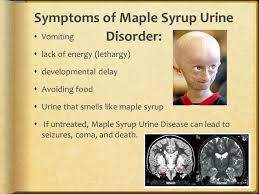
Maple Syrup Urine Disease

03.03.2025
Maple Syrup Urine Disease
|
For Prelims: About Maple Syrup Urine Disease, Types of the Maple Syrup Urine Disease |
Why in the news?
Recently, scientists have created a new gene therapy for a debilitating genetic disorder called maple syrup urine disease (MSUD).
About Maple Syrup Urine Disease:
- It is a rare genetic disorder characterized by deficiency of an enzyme complex (branched-chain alpha-keto acid dehydrogenase) that is required to break down (metabolize) the three branched-chain amino acids (BCAAs) leucine, isoleucine and valine, in the body.
- It’s inherited in an autosomal recessive pattern. A child is born with MSUD when both parents are carriers of the specific gene mutation and pass it on.
- The loss of this complex prevents the body from properly breaking down several amino acids, eventually leading to neurological symptoms and life-threatening brain damage.
Types of the Maple Syrup Urine Disease:
- Classic: It is the most severe and also the most common. Symptoms usually develop within the first three days of birth.
- Intermediate: It is less severe than classic MSUD. Symptoms typically appear in children between 5 months and 7 years old.
- Intermittent: Children with intermittent MSUD develop as expected until an infection or period of stress causes symptoms to appear. People with intermittent MSUD usually tolerate higher levels of the three amino acids than those with classic MSUD.
- Thiamine-responsive: This type of MSUD responds to treatment using high doses of vitamin B1 (thiamine) along with a restricted diet.
Symptoms of the Disease :
-
- A sweet, syrupy smell in their pee, sweat or earwax
- Lethargy (they may move slowly or appear tired or weak)
- Irritability or fussiness
- Treatment of the Disease: The main treatment for MSUD is a low-protein diet with low levels of the three amino acids.
Source:The Hindu
With reference to Maple Syrup Urine Disease, consider the following:
1. It is a disorder characterized by deficiency of an enzyme complex branched-chain alpha-keto acid dehydrogenase.
2. It is inherited in an autosomal recessive pattern.
3. It affects old age people and damages brain cells.
How many of the above statements are correct?
A.Only one
B.Only two
C.All three
D.None
Answer B